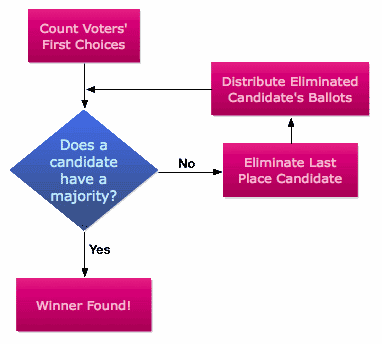Voting Process
Voters rank the candidates in order of preference, with “1” being the highest (most preferred) ranking. For example, if there are 3 candidates, the voter chooses 1 beside their first choice, 2 beside their second choice and 3 beside their third choice.

To be considered a valid ballot, the submitted ballot must satisfy the following conditions:
- At least one candidate must be ranked for each position. In case abstention is allowed and the voter has abstained from voting for a position, the ballot may still count as valid for any other positions in the election.
- No two candidates can have the same ranking, or the ballot is invalid (for that particular position only).
- Any candidate can be given any ranking, as it is the relative ranking that is counted. For example, in an election for a position with five (5) candidates, a valid ballot may be ranked “no selection/no selection/4th/5th/3rd”. In this case, the last candidate will be first choice for this voter (since “3rd” is the highest ranking marked on the ballot), followed by the third candidate and then the 4th candidate.
How Preferential Voting Results are Calculated

The first preference on each ballot counts as a vote for that particular candidate, and the votes are tallied. If no candidate receives a majority (greater than 50% of the total valid ballots), the candidate with the fewest number of votes is eliminated and the ballots for that candidate are redistributed to each ballot’s second preference. The process continues until a majority is reached by one of the candidates.
Note: There are many variants of winner selection that can also be done with this method, including Single Transferable Vote (STV). ElectionBuddy provides voting details while keeping voters anonymous so that you can select your own winner.
For further details, please visit Instant Runoff Voting on Wikipedia